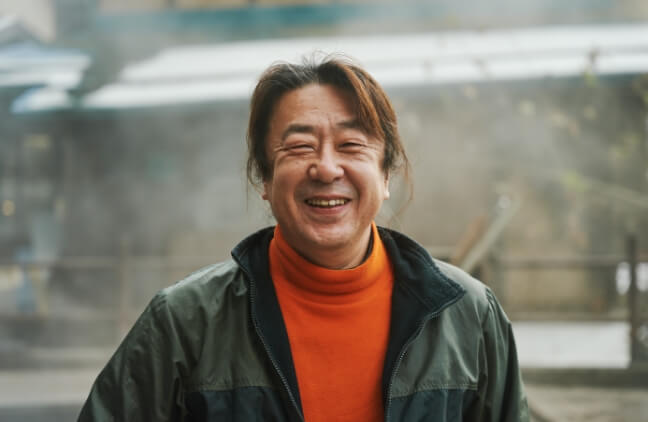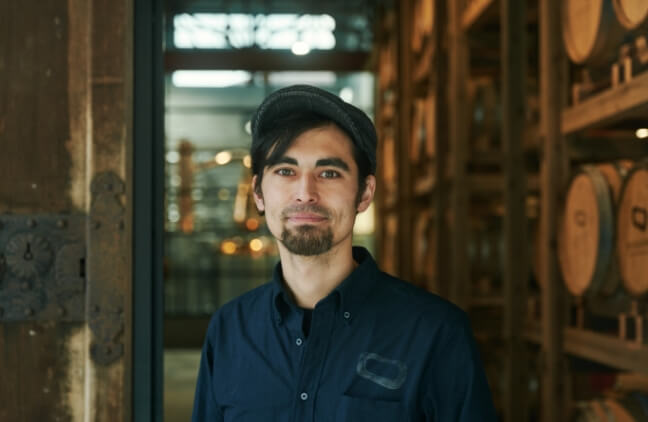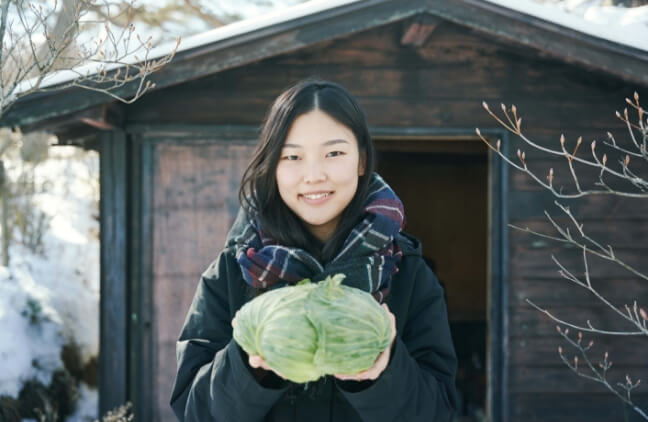"The Respect for the Cycle of Water and Fire
The Story of Symbiotic Coexistence Passed Down to Generations"
"The Respect for the Cycle of Water and Fire
The Story of Symbiotic Coexistence Passed Down to Generations"
The vast Joshin’etsukogen National Park is the fourth largest in Japan. To be honest, we had a difficult time deciding where to visit, but this time, we decided to focus on Nozawa Onsen Village. The deciding factor was the words of Kenji Kono, The North Face Athlete, who said, "If you're interested in an intriguing story revolving around water, it's the perfect place." With Kenji Kono, who is from Nozawa Onsen Village and currently serves as the chairman of the village's tourism association, let us embark on a journey of water and fire.
- Guide
- Kenji Kono
- Location
- Joshin’etsukogen National Park


Photographer Hinano Kimoto
Writer Takumi Sakurai
Guide

Kenji Kono
Skier
The North Face Athlete
Born in 1983 in Nozawa Onsen Village. He has been a prominent athlete in ski cross since his teenage years, competing in the World Cup. After stepping back from the frontlines in 2014, he co-founded "NOZAWA GREEN FIELD" with his friends, organizing tree camping with thinned wood, harvest experiences, SUP tours, and other activities. Additionally, he is actively involved in ski development with VECTOR GLIDE and takes part in various endeavors. Currently, he serves as the chairman of the Nozawa Onsen Village Tourism Association, contributing to shaping the future of Nozawa Onsen.
https://www.nozawagreenfield.com/
People

Specified Nonprofit Corporation Ossekai
Kiichi Mori
He is one of the founding members of the Osekkai, which was established in 1999. He is involved in guided nature observation tours, environmental education, traditional culture education, and other activities to pass on the rich nature and culture of Nozawa Onsen Village to the next generation. Additionally, he initiated the "Beech Forest 100-Year Vision" and the tree-planting projects involving elementary school students.
http://npo-osekkai.net/

Nozawa Agricultural Production Cooperative / Union President
Yoshizo Takahashi
Since childhood, he has been helping with the family's farming business and has been dedicated to pursuing the production of delicious rice for many years. He has received numerous awards, and in 2012, he was one of only seven people in Japan to be awarded the prestigious "Diamond Medal" at the nation's largest rice competition. His rice has also been selected as an offering rice.
https://nozawanosan.or.jp/

Akira Katagiri
The 5th generation owner of Kiriya Ryokan, founded in 1888. Deeply passionate about the hot springs of Nozawa Onsen Village, he engages in various activities to preserve the abundant hot spring waters. He also serves as the Chairman of the "Nozawa Onsen Ryokan Hotel Business Cooperative Association" and a director of the "Osekkai" association
https://kiriya.jp

Isamu Yoneda
Born to Japanese and Scottish parents, he spent most of my life in England. In 2015, he joined the Kiuchi Brewery. Later, in 2021, he relocated to Nozawa Onsen Village and joined the Nozawa Onsen Distillery. Currently, he is involved in producing craft gin and preparing for whiskey production.
https://nozawaonsendistillery.jp

Toshinari Kanai
He is currently in charge of the Makune River Small hydroelectric power Plant. He not only manages the hydroelectric power plant, but also handles the visits from various parties for inspections and observations. He and Kenji Kono are classmates.
https://www.vill.nozawaonsen.nagano.jp

Naohiro Orihara
He is the National Park Utilization Planning Officer at the Shin-Etsu Natural Environment Office. Having worked as a photographer and guide in the Canadian Rockies for about three years, he gained valuable experiences in Banff and Jasper National Parks. Inspired by these experiences and his subsequent work in a resort management company after returning to Japan, he joined the Ministry of the Environment in 2019 with the aim of applying his knowledge to Japan's national parks. Currently, he serves as the National Park Utilization Planning Officer, primarily focusing on the Joshin'etsukogen National Park and Myoko-Togakushi renzan National Park. In addition to exploring various ways to utilize national parks, such as educational trips to learn about SDGs, he also hosts a personal podcast about Japanese tourism.

She is the founder of the Fuketsu Cabbages at Oni-Oshi-Dashi Garden. She also utilizes thinnings from Tsumagoi, such as larch, fir, and spruce, to create aromatherapy oils. Actively involved in developing new specialty products in Tsumagoi, she also commercializes sets combining the aromatherapy oils with aroma stones made from Mount Asama's volcanic rocks.
https://www.tsumagoi-kankou.jp

Motomo Matsumoto (Right)
Mitsuri Takizawa (Left)
Members of "Tsumano Teshigoto," a brand created by housewives of farmers living in Tsumagoi Village. They develop and sell various products to promote the charm of Tsumagoi Village, such as Tsumagoi Cabbage Vinegar and "yamagashi," a candy inspired by Mount Asama.
https://tsumanoteshigoto.com




























